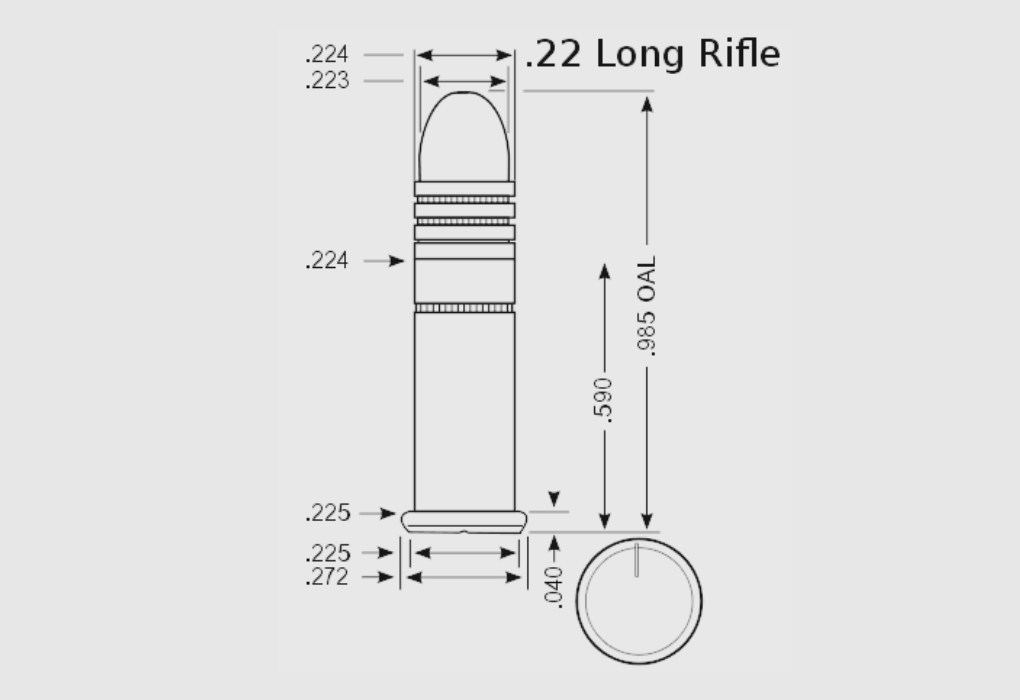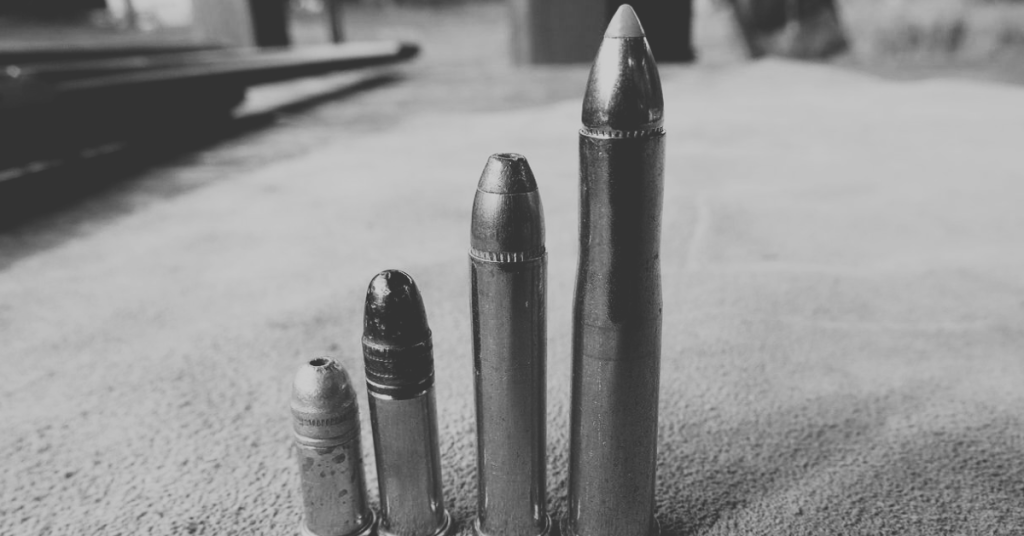The .22 Long Rifle is a rimfire cartridge that takes the top spot as the most common and popular cartridge in the world.
While it’s not quite as readily available or inexpensive as it used to be, target shooters, small game hunters and competitive shooters have propelled it to become the standard cartridge for rifles.
It is also the cartridge of choice for international sporting events such as the Olympic Games and other competitions including: Olympic precision Rifle and Pistol shooting, bullseye, biathlon, metallic silhouette, benchrest shooting, and pin shooting, as well as many youth events with the Boy Scouts of America, 4H, and Project Appleseed.
History of Rimfire Cartridges

Rimfire cartridges hold the distinct honor of being the oldest self-contained cartridge in existence. Originally made with copper casing, the bullet was the ideal for use in pistols and repeating rifles.
Manufacturers chose copper casing due to the low cost and its malleability. This was less taxing on the weapon’s mechanisms, which often broke with larger caliber ammo.
The .22 LR first came on the scene in 1857 when Smith & Wesson developed it for their First Model, a spur-triggered revolver with a bottom-hinged barrel.
The cartridge, loaded with 29-30 grain lead bullet with 4 grains of black powder, quickly caught the attention of shooters worldwide due to ease of use, portability, and economy.
S&W had intended the .22 to be used for recreational use and competitive shooting but it soon became the choice of those wanting to carry small pistols for protection.
In 1871, the casing was extended to include an extra grain of black powder, renaming S&W’s offering .22 Short. In 1880, the cartridge morphed again when the Extra Long added yet another grain of powder, totaling 6 grains.
The reduced accuracy caused shooters to shun the new cartridge which was eventually retooled in 1887 by the J. Stevens Arms & Tool Company. The .22 LR was born.
Since that time manufacturers have continued to make improvements on the cartridge, seeking to improve its accuracy and velocity. It remains relatively inexpensive to produce and you can use it in an infinite number of handguns and rifles.
The .22 LR Today

Today’s .22 LR loads are divided into four categories, based on velocity:
- Subsonic, including “target” or “match” loads: below 1100 fps (feet per second)
- Standard-velocity: 1120–1135 fps
- High-velocity: 1200–1310 fps
- Hyper-velocity/Ultra-velocity: over 1400 feet fps
Some argue that the .22 LR doesn’t wield as much power as the larger bore cartridges. While this is true, its diversity, accuracy, and low recoil continue to increase its popularity.
Experts claim that the cartridge shouldn’t game hunters or those looking to protect themselves shouldn’t use it. However, it has proven that it can and will do the job if the placement is accurate.
In some cases, law enforcement and the military used it due to its low noise and ease of portability. The .22 LR is great for sporting events, target practice, training, and pest control.

